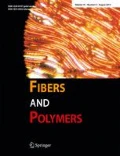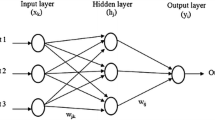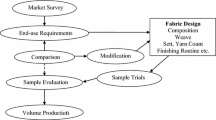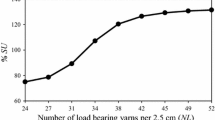Abstract
The possibility of prediction of bending rigidity of cotton woven fabrics with the application of Neuro-genetic model has been explored. For this purpose, number of cotton grey fabrics meant for apparel end-use was desized, scoured, and relaxed. The fabrics were then conditioned and tested for bending properties. A feed-forward neural network model was first formed and trained with adaptive learning rate back-propagation with momentum. In the second model, a hybrid learning strategy was adopted. A genetic algorithm was first used as a learning algorithm to optimize the number of neurons and connection weights of the neural network. Later, a back-propagation was applied as a local search algorithm to achieve global optima. Results of hybrid neural network model were compared with that of back-propagation neural network model in terms of their prediction performance. Results show that the prediction by Neuro-genetic model is better in comparison with that of back-propagation neural model.
Similar content being viewed by others
References
J. Lindberg, L. Waesterberg, and R. Svenson, J. Text. Inst., 51, T1475 (1960).
J. W. S. Hearle, Int. J. Cloth. Sci. Technol., 16, 141 (2004).
G. Stylios, Int. J. Cloth. Sci. Technol., 10, 1 (1998).
B. K. Behera and R. Guruprasad, Fiber. Polym., 11, 1187 (2010).
B. K. Behera and R. Guruprasad, J. Text. Inst., 103, 1205 (2012).
D. E. Goldberg, “Genetic Algorithms in Search, Optimization and Machine Learning”, Addison-Wesley, USA, 1989.
L. S. Admuthe and S. D. Apte, International Journal of Computer Theory and Engineering, 1, 1793 (2009)
M. H. Mohamed and P. R. Lord, Text. Res. J., 43, 154 (1973).
S. Haykin, “Neural Networks”, Macmillan, New York, USA, 1994.
H. Demuth and M. Beale, “Neural Network Toolbox for Use with Matlab”, The Math Works Inc., 2000.
M. Caudill, AI Expert, 3, 53 (1988).
K. F. Man, K. S. Tang, and S. Kwong, IEEE Transactions on Industrial Electronics, 43, 519 (1996).
A. T. C. Goh, Artificial Intelligence in Engineering, 9, 143 (1995).
F. T. Peirce, J. Text. Inst., 21, T377 (1930).
R. Guruprasad, Ph.D. Dissertation, Indian Institute of Technology, New Delhi, 2011.
J. D. Olden and D. A. Jackson, Ecological Modeling, 154, 135 (2002).
J. D. Olden, M. K. Joy, and R. G. Death, Ecological Modeling, 178, 389 (2004).
Author information
Authors and Affiliations
Corresponding author
Rights and permissions
About this article
Cite this article
Guruprasad, R., Behera, B. Predicting bending rigidity of woven fabrics by neuro-genetic hybrid modeling. Fibers Polym 15, 1099–1105 (2014). https://doi.org/10.1007/s12221-014-1099-6
Received:
Revised:
Accepted:
Published:
Issue Date:
DOI: https://doi.org/10.1007/s12221-014-1099-6




